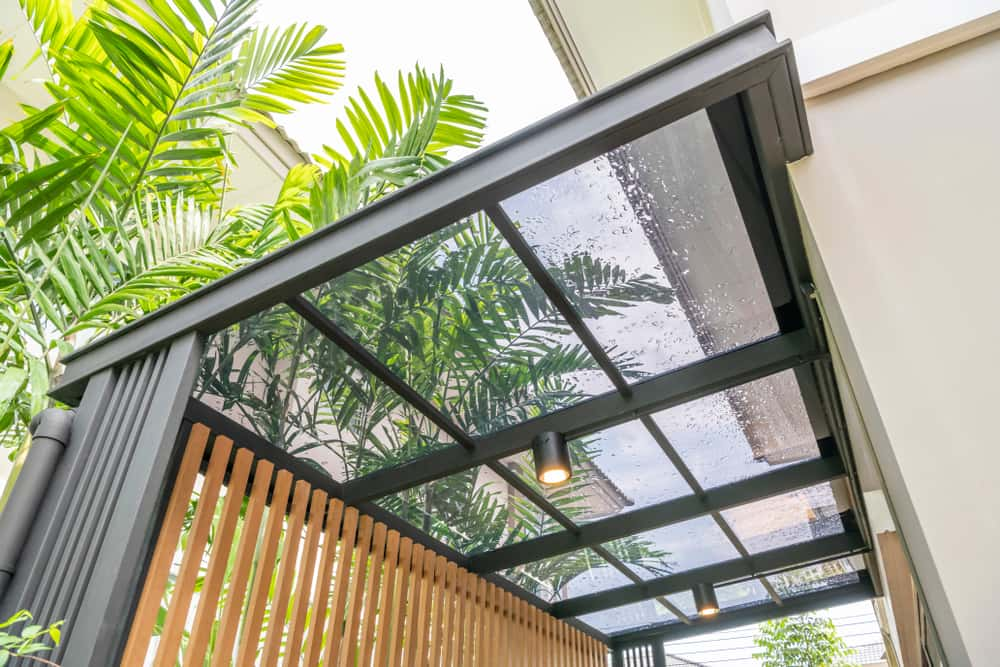In the world of roofing innovations, Acryldach stands out as a versatile, durable, and stylish option for both residential and commercial projects. Derived from the German words Acryl (acrylic) and Dach (roof), Acryldach literally translates to acrylic roof. It refers to roofing systems made from acrylic panels, which are known for their transparency, weather resistance, and long lifespan.
From greenhouses and pergolas to large-scale industrial applications, acrylic roofing has steadily gained popularity as people look for solutions that combine aesthetic appeal with practical performance. Let’s explore what makes Acryldach such an attractive choice, how it compares to traditional roofing materials, and why it’s shaping the future of construction.
What Is Acryldach?
Acryldach refers to roofing systems that use acrylic-based panels as the main covering material. Acrylic is a transparent thermoplastic known for its glass-like clarity but much lighter weight. In roofing applications, acrylic panels can be clear, tinted, or even textured, depending on the design requirements.
Key characteristics of Acryldach panels include:
- Lightweight yet strong – Much lighter than glass but with impressive impact resistance.
- Excellent light transmission – Allows natural light in without the glare of direct sunlight (especially when tinted).
- Weatherproof properties – Resistant to UV rays, rain, snow, and temperature fluctuations.
- Long lifespan – Acrylic roofing can last 20+ years with proper maintenance.
Why Choose Acrylic Over Traditional Roofing Materials?
When comparing Acryldach to materials like glass, polycarbonate, metal sheets, or asphalt shingles, acrylic has some clear advantages:
- Better Light Quality
- Acrylic panels transmit light evenly, creating a soft, natural illumination. This is ideal for greenhouses, patios, or indoor spaces that need sunlight without harsh heat.
- Lightweight Construction
- Being lighter than glass or metal reduces structural load and makes installation easier.
- Design Flexibility
- Available in a variety of colors, finishes, and shapes, Acryldach can be customized for modern, minimal, or classic architectural styles.
- Durability Against Weather
- Acrylic roofing resists discoloration and brittleness caused by prolonged UV exposure.
- Cost-Effective in the Long Run
- While the initial cost may be slightly higher than some alternatives, the long life and low maintenance make it economical over time.
Applications of Acryldach
The versatility of acrylic roofing means it can be used in a wide range of settings:
1. Residential Projects
- Patio Covers: Keeps the area bright and airy while offering rain protection.
- Pergolas: Creates an outdoor seating area that feels connected to nature.
- Sunrooms: Lets in natural light without the energy loss associated with large glass panels.
2. Commercial Buildings
- Retail Spaces: Adds a modern aesthetic and creates an inviting atmosphere with daylight illumination.
- Restaurant Outdoor Areas: Provides shelter while maintaining an open, natural feel.
3. Greenhouses
- Acrylic’s high light transmission makes it an excellent choice for plant growth, while its insulation properties help regulate temperature.
4. Industrial Use
- Warehouses, skylights, and covered walkways benefit from its strength and low maintenance needs.
Installation Process of Acryldach Roofing
Installing acrylic roofing panels requires precision and the right tools, but the process is straightforward:
- Planning & Measurement
- Accurate measurements ensure proper fit and minimal material waste.
- Structural Support
- Frames made of aluminum, steel, or treated wood provide stability.
- Cutting Panels
- Acrylic sheets are cut to size using specialized tools to prevent cracking.
- Sealing & Fastening
- Weather-resistant screws and rubber gaskets are used to secure panels while allowing for thermal expansion.
- Final Inspection
- Checking for gaps or loose fittings ensures long-term performance.
Maintenance Tips for Acryldach Roofing
While acrylic roofing is low-maintenance, a few simple practices will keep it in top shape:
- Regular Cleaning
- Use mild soapy water and a soft cloth to avoid scratches.
- Avoid Harsh Chemicals
- Solvents like acetone can damage the surface.
- Inspect for Cracks
- Small cracks can be repaired with acrylic-compatible sealants before they spread.
- Clear Debris
- Remove leaves, branches, or dirt to prevent water pooling.
Environmental Benefits of Acryldach
Choosing an acrylic roof can also be a sustainable choice:
- Energy Efficiency
- Natural light reduces the need for artificial lighting.
- Recyclability
- Acrylic can be recycled, reducing landfill waste.
- Long Life Cycle
- Less frequent replacement means less environmental impact from manufacturing and transport.
Acryldach vs. Polycarbonate Roofing
Both acrylic and polycarbonate are popular transparent roofing materials, but they differ in key ways:
| Feature | Acrylic (Acryldach) | Polycarbonate |
|---|---|---|
| Light Transmission | Higher clarity, less distortion | Slightly less clear |
| UV Resistance | Excellent, long-lasting | Needs UV coating |
| Impact Resistance | Good, but lower than polycarbonate | Extremely high |
| Weight | Lightweight | Slightly heavier |
| Scratch Resistance | More resistant to scratches | Scratches more easily |
Cost Considerations
The cost of an Acryldach roof depends on:
- Panel thickness and quality
- Size of the project
- Installation complexity
- Color or tinting options
On average, acrylic roofing panels cost slightly more than standard metal or asphalt solutions but less than premium glass roofing. Considering their longevity, appearance, and energy savings, many see it as a worthwhile investment.
Future of Acryldach Technology
Advancements in material science are pushing acrylic roofing even further:
- Self-cleaning coatings to reduce maintenance.
- Improved UV protection for even longer lifespan.
- Smart roofing with integrated solar panels for energy generation.
As these innovations mature, Acryldach could become a key player in eco-friendly architecture.
Final Thoughts
Acryldach represents more than just a roofing option—it’s a blend of style, practicality, and durability that meets the needs of both modern homeowners and businesses. With its lightweight design, excellent light transmission, and weather resistance, acrylic roofing provides a unique balance between function and aesthetics.
For anyone looking to brighten spaces, reduce maintenance, and embrace a sleek, contemporary design, Acryldach is a roofing solution worth considering.
